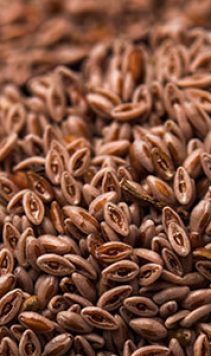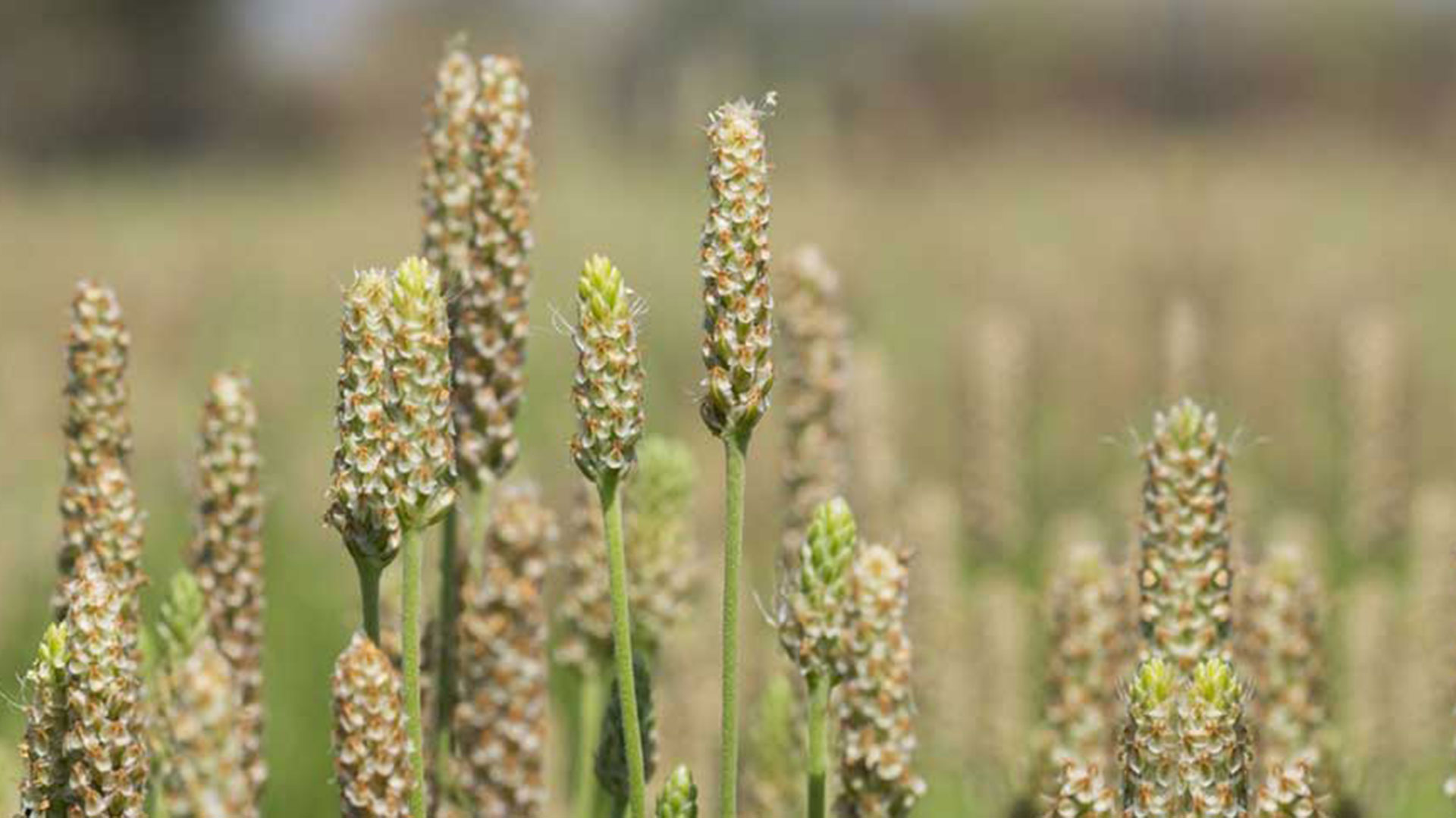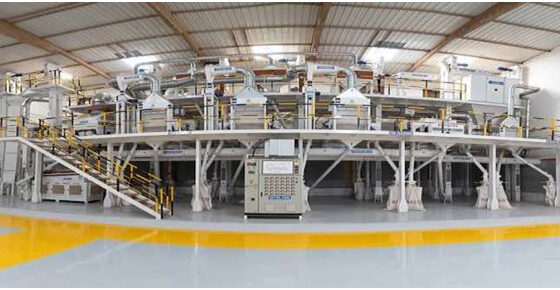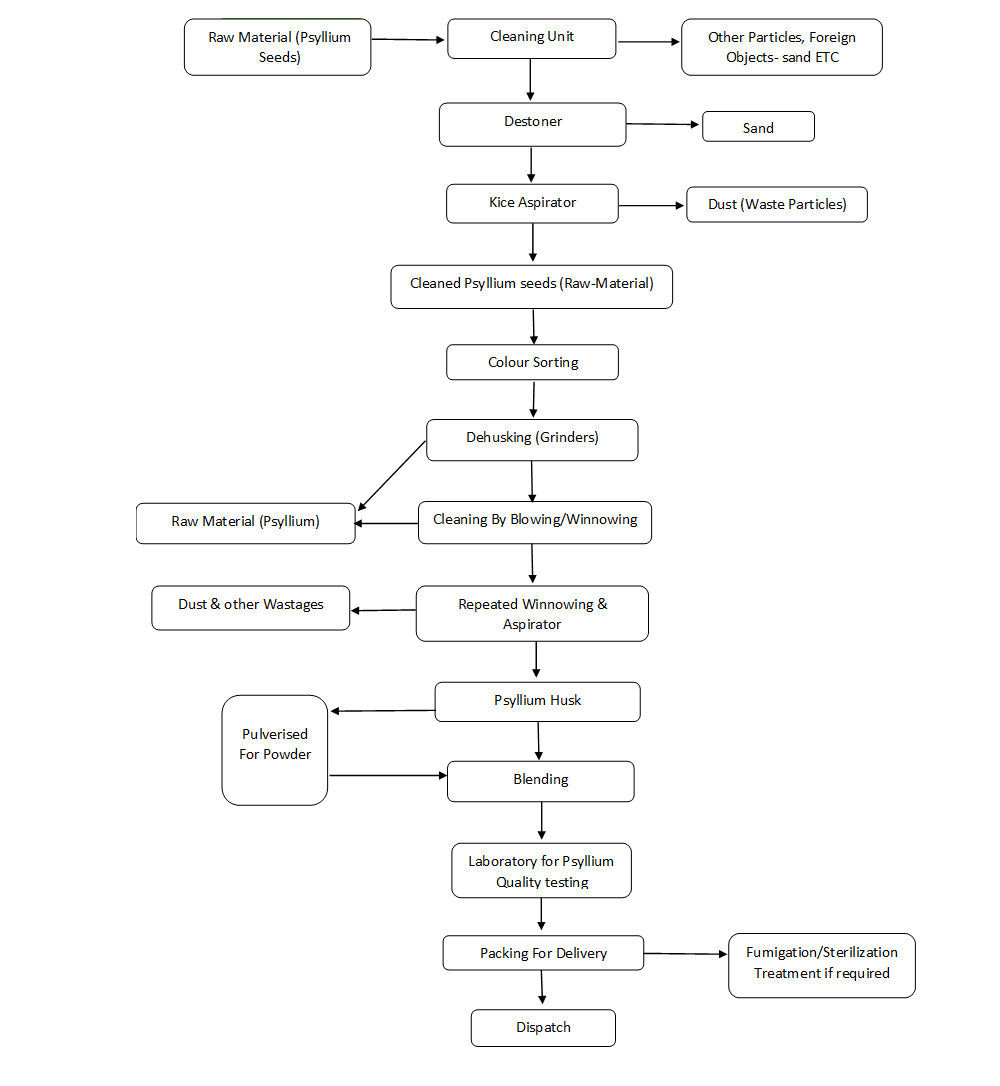About Psyllium


Introduction of Psyllium Cultivation
Psyllium is also known as ispaghula or Isabgol. Psyllium
seed husks are portions of the seeds of the plant Psyllium (Plantago ovata). Psyllium is a short-stemmed medicinal annual herb that grows up to a height of 35 to 40 cm. Psyllium (Plantago ovate forsk) is grown for its seeds. India is top producer of these seeds and Psyllium husk. Psyllium is commercially important Rabi (Winter) season medicinal crop grown in India. Apart from its husk (The seed coat is known as “husk”) medicinal properties, it is also being used in food industry, Pharmaceuticals, Bread, ice creams, biscuits, and candies.
This crop is commercially cultivated mainly in the 3 states of India, Rajasthan, Gujarat and Madhya Pradesh. Psyllium can be used in the form of Psyllium Seed, Psyllium Husk, and Psyllium Powder.
Introduction of Psyllium Cultivation
Psyllium is also known as ispaghula or Isabgol. Psyllium
seed husks are portions of the seeds of the plant Psyllium (Plantago ovata). Psyllium is a short-stemmed medicinal annual herb that grows up to a height of 35 to 40 cm. Psyllium (Plantago ovate forsk) is grown for its seeds. India is top producer of these seeds and Psyllium husk. Psyllium is commercially important Rabi (Winter) season medicinal crop grown in India. Apart from its husk (The seed coat is known as “husk”) medicinal properties, it is also being used in food industry, Pharmaceuticals, Bread, ice creams, biscuits, and candies.
This crop is commercially cultivated mainly in the 3 states of India, Rajasthan, Gujarat and Madhya Pradesh. Psyllium can be used in the form of Psyllium Seed, Psyllium Husk, and Psyllium Powder.


Family Name of Psyllium: – Plantaginaceae.
Botanical/Scientific Name of Psyllium: – Plantago ovata.
Common Names of Psyllium: – Isabgol, Ispaghula, Psyllium Seed, Indian Plantago, Spogel, Sand Plantain, Flea Seed, Plantago sp., Isabgula, Plantaginis Ovatae Semen and Semen Ispaghulae.
Local Names of Psyllium in India:- Ispaghula, Psyllium, Blond Psyllium, Spogel Seeds, Ripple Grass (English), Ashwagol, Ishadgola, Ashwakarna, Ashwakarnabeeja, Sheetabeeja, Ishrawarabola, Snigdhajeeraka (Sanskrit), Psyllium, Isabgul, Issufgul, Ispaghul, Isubgol (Hindi), Esphopgol, Isabgul, Isshopgul, Ispaghul (Bengali),Isapgol, Isafghol, Ghoda Jeeru, Umtojeeru, Uthamujeerun (Gujarati), Iskolvirai, Iskol, Isphagol, Ishappukolvirai, Ishappukol (Tamil), Isofgolu, Visamagolu, issabagolu, Isabakolu (Kannada), Karkatasringi, Snigddhajirakam, Ispaghal (Malayalam), Psylliuma, Isapghol (Marathi), Lisapghol, Bartang, Abghol (Punjabi), Isphagula, Isapgaluvittulu, Isapagala (Telugu), Is-mogul (Kashmiri),Isabgul (Oriya).
Climate Requirement for Psyllium Cultivation: – Basically, Psyllium is cultivated as Rabi crop (Wintercrop) and requires dry sunny weather during its maturity season. Even light showers or cloudy Weather can cause seed shedding and results in decrease yield or production. The best suited soil for psyllium cultivation is sandy salty soil. Psyllium’s high mucilage content makes it a true dietary fiber.

What is PSYLLIUM and Its Uses
What is PSYLLIUM Husk & Powder ?
Psyllium husk is collected by grinding Psyllium seed and Psyllium powder is pulverization of Psyllium husk. Psyllium is a main source of dietary fiber which have soluble and insoluble fiber content in it. Psyllium is a bulk-forming fiber laxative. Psyllium works by absorbing liquid in the intestines and swelling to create a softer, bulky stool that is easier to pass. psyllium refers to a plant of the genus Plantago whose seeds are used commercially for the production of mucilage. It has the property of swelling and becoming gelatinous when moist and is used as a mild laxative. Psyllium may also be used to treat diarrhea.
Common Uses Of PSYLLIUM
Prevents constipation [Relieving constipation and softening stools] Promotes weight loss [Lowering cholesterol in people with high cholesterol] Softens stools following surgery for anal fissures or hemorrhoids Prevents colon cancer Controls high blood pressure Regulates blood sugar [Lowering blood sugar] Prevents inflammatory gastrointestinal diseases
Direction Of use Psyllium Husk Fibre oral
Take this medication directly by mouth as directed instruction by your doctor. If you are self- treating, follow all directions on the product package. If you are uncertain about any of the information, ask your doctor or pharmacist. To prevent choking from this medication, take it with a full glass of water or other liquid (8 ounces/240 milliliters). If you are taking the wafers, chew them thoroughly before swallowing.
Why Psyllium?
Psyllium (Ispaghulla) husk – Help to promote weight loss.
Psyllium husk is a plant that mostly grows in India and Indian continent (Mostly Western Zone) and it has excellent health and weight loss benefits. Psyllium husk Fiber not only promotes the health, but also helps in losing weight without any changes in the general diet or per day diet. Fiber is a substance in fruits, vegetables and grains that you can eat, but that your body can’t digest. There are two types of fiber present : soluble and insoluble fiber.
Soluble and insoluble fiber play different roles in promoting health and preventing disease. Fibers are present in the different natural sources such as Fiber comes from plant foods: fruits, vegetables, grains, nuts, and legumes.
Soluble Fibers attract water and form a gel, which slows down digestion. Soluble fiber delays the emptying of your stomach and makes you feel full, which helps control weight. Slower stomach emptying may also affect blood sugar levels and have a beneficial effect on insulin sensitivity, which may help control diabetes. Soluble fibers can also help lower LDL (“bad”) blood cholesterol by interfering with the absorption of dietary cholesterol.
Insoluble fiber is found in foods such as wheat bran, vegetables, and whole grains. It appears to speed the passage of foods through the stomach and intestines and adds bulk to the stool. In other words, it helps promote regular bowel movement and prevent constipation, which is essential in order to achieve weight loss.
Why we eat fiber?
We should eat more fibers to help keep the digestive system up and running. Fibre also helps to protect against heart disease and cancer as well as help to maintain a healthy weight. fibersis found in lots of foods, which include all fruits and vegetables, bread and cereals.
How much fiber we need to eat per day?
- Daily Aim to consume at least 25 grams of fiber on per day basis.
- Men aged 19 to 50 need 38 grams of daily fiber
- Men aged 51 and older need 30 grams of daily fiber
- Women aged 19 to 50 need 25 grams of daily fiber
- Women aged 50 and older need 21 grams of daily fiber
Psyllium Husk : How it help to reduces hunger and result help to reduce wait.
The great thing about Psyllium husk is that it is rich in both fiber soluble and insoluble fiber. In two tablespoons of psyllium husk, it delivers about 8 grams of fiber. Psyllium husks have the ability to absorb significant amounts of water to form a gelatinous mass that stimulates bowel movements. Psyllium may provide low-calorie volume, allowing your body to register that you feel full, reducing overeating. For weight loss take 1 tbsp. powdered psyllium husk mixed in an 8 oz. glass of water at least 30 minutes prior to meals. Psyllium husk swells up to 10 to 20 times its original size when mixed with water. By filling up your stomach it reduces the amount of hunger that you feel and thus aids in your weight loss. It is recommended that when you take psyllium husk about 20 to 30 minutes prior to your meal then you should drink lots of water so it will give positive result.
Psyllium Husk help to lowering the blood sugar:
Psyllium Husk help to lowering the blood sugar Diabetes is a growing health concern that affects millions of people in whole world.The good news is that when we take the diet which rich in fiber can help to decrease the blood cholesterol and help maintain proper blood glucose and insulin levels in human body.
Psyllium Husk contains soluble fiber, is derived from Plantago psyllium, Psyllium husk that grows widely throughout the world. Consumed for its potential cholesterol- and blood pressure-lowering benefits, psyllium may also help manage blood sugar levels. Psyllium is a very good way to boost fiber intake to control blood sugar.
How it works:
Psyllium husks consist of about 30% of mucilage, xyclose, arabanose and galacutronic acids. Additionally ,every 100 grams of psyllium husks contains 71 grams of soluble fiber. It also contains glycosides, proteins, vitamin B1 choline and polysaccharides .All these components contribute to the high quality of nutrition provided by the psyllium husks.Water-soluble dietary fibers decrease postprandial glucose concentrations and decrease serum cholesterol concentrations. Psyllium husks helps lower insulin and blood sugar levels for diabetic people and reduces the chances of getting the disease for the people at risk of contracting the disease.
The dose: 25 to 35 grams of fiber per day, studies suggest that people with type 2 diabetes who eat a high fiber diet can improve their blood sugar and cholesterol levels.
Do NOT USE PSYLLIUM : If you are allergic to any ingredient in psyllium If you have appendicitis, difficulty swallowing, severe constipation, intestinal blockage, or undiagnosed rectal bleeding
Precautions : Taking this supplement without the sufficient water can lead to constipation, esophageal obstruction, choking or asphyxiation. Psyllium husk is not recommended for use by children or those experiencing bowel obstructions or spasms.
Psyllium For Animals
Similarly, Psyllium Husk is a natural source of dietary fiber for animals as well. Psyllium is a bulk-forming laxative used to treat several large intestine disorders in dogs, cats, and Horses. Ensure access to sufficient water when treating with psyllium or intestinal obstruction could occur.
Why Animal Needs Fiber?
The function of fiber in the diet is to increase both bulk and water in the intestinal contents. Fiber will lengthen intestinal transit time (that is, slow down the rate at which food moves through the digestive tract) in pets with fast transit times, and speed up the transit times in animals with slow transit times. What this means is that fiber will help treat both diarrhea and constipation. Fiber absorbs extra water in diarrheic stools, and it helps hold onto water, which prevents constipation. Some fiber is broken down in the intestine into fatty acids. These fatty acids will aid in preventing the overgrowth of harmful bacteria. They will also help the colon cells to recover from injury and possibly help reduce the risk of colon cancer. Fiber has been an often-overlooked ingredient in pet food. There appear to be many benefits from the addition of both rapidly and slowly fermented fiber sources to pet diets. Fiber is as necessary to control and managed obesity, diarrhea, constipation, or diabetes mellitus in dogs, additional fiber sources may be beneficial.
Psyllium Husk & Powder Process
Production of Psyllium husk from Psyllium Seed is done by following 8 steps.
1.Seed Cleaning Department:
(grain cleaning department/destoner) The raw psyllium seeds are cleaned by mechanical process through various steps of processing where no chemicals are used. We have a rigorous ten stage cleaning process of the seeds, which is followed by the de-husking of the seed.
All Stages can be cleaned 500 Kg of Psyllium Seed per hour. This is 1 st stage. After cleaning of seed, it goes to second stage for gravity department.

2. Gravity department:
Separate different size of seeds and remove extra objects like very small stone, sand, long, medium, and small stick, and different seeds as it requires
3. Sortex department (Optical sorter):
separate all kind of seeds via color sorter machine E.g., for psyllium husk, it needs to set color like white/pale as requires getting 100% psyllium husk in hopper
4. Seed Grinding Department:
Psyllium seeds which are sortex in hopper are transferred to the Grinding department. To separate Psyllium Husk from Psyllium seed. Processes for psyllium seeds dehusking to obtain high yields of pure and quality psyllium seed husk. These processes include milling intact psyllium seeds in a mill which causes the husk to be fragmented by collision under conditions whereby the husk is fractured and separated from the non-husk portion of the psyllium seed without substantial breakage and size reduction of the non-husk portion.
5. Winnowing Department: – (purification) Collected Psyllium husk from the grinding department is separated here by screeners and winnowers. To remove any impurities. Also at this stage, Psyllium husk has been separated as per different grades from high to low Psyllium grades from 80% to 99% Purity.
6. Blending Department:
Cleaned Psyllium husk which is collected from winnowing department is blended here to make Homogenous batch. Then our manufacturer screens the material
to remove any other parts and pass material through magnets and metal detector to remove metal such as ferrous and non-ferrous. Also, as per the process chart, after pulverizing process the finish powder products travel to the Blending department to make Homogenous batch. And final finished product similarly pass-through magnets and metal detector to remove metal such as ferrous and non-ferrous
7. Pulverize to make powder form of Psyllium Husk.
Blended Psyllium husk as per customer`s requirement psyllium husk has been pulverized in below machine according to client requirement of Mesh size 40
mesh, 60 mesh, 80 mesh ,100 mesh and so on (powder form) from the client chosen purity from 80% to 99%.
8. Laboratory for Psyllium quality testing.
After blending of Psyllium husk or Powder the finished psyllium product has been tested in manufacturer in-house lab. Most of the tests including microbiological tests are conducted at in-house laboratory, which help to maintaining quality and supply of materials as per buyer’s Specification.

